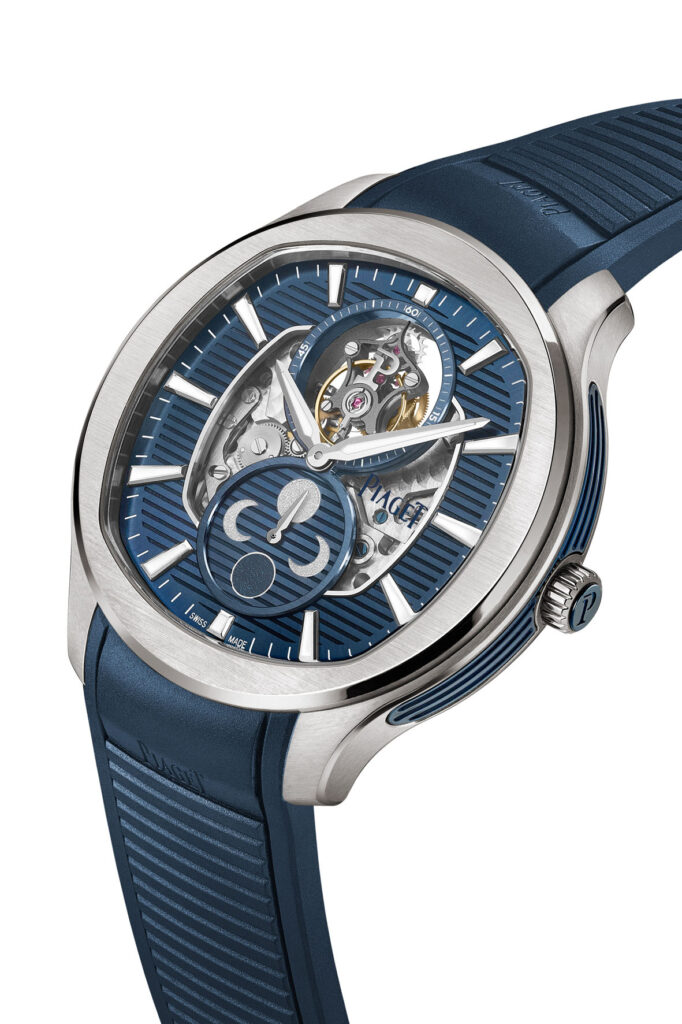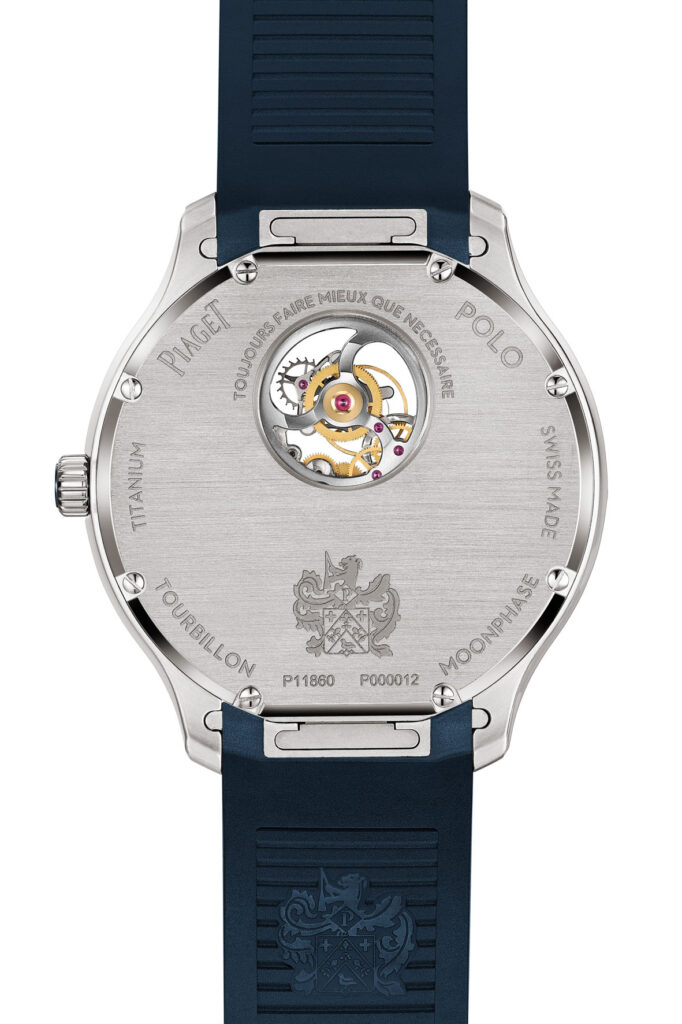Polo Flying Tourbillon Moonphase: Piaget’s true sporty-chic soul
4 February 2025When we speak of the 1970s, we are referring to one of the most prolific periods for the watchmaking industry. Years in which the segment of so-called ‘sporty-chic’ watches was born, within which references that became true myths saw the light of day. Among these, the Piaget Polo was perhaps the last to be created, in 1979, but since then it has continued to evolve while maintaining its own, strong identity. Especially in the last few years, Piaget has produced some memorable references, starting with the skeleton 2021, up to the perpetual calendar 2023.
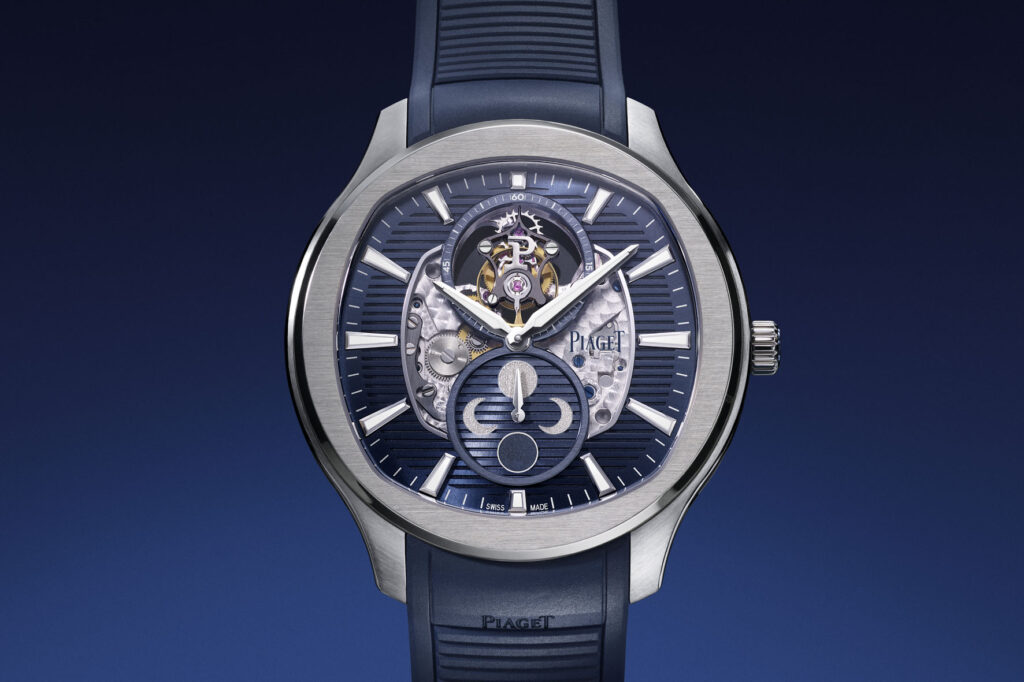
Evidently, the odd-numbered years are of particular inspiration to the Maison, as today, 2025, the Piaget Polo is dressed with an unprecedented double complication, giving life to a watch that is once again astonishing: a flying tourbillon with a precision moonphase module. A combination that gives the Polo a further precious and elegant guise, with many aesthetic and technical details worth depicting.
THE PIAGET 642P CALIBRE
We will not recount the history of the Polo, which you can read briefly here. What we are interested in is getting straight to the heart of the new Piaget Polo Flying Tourbillon Moonphase. In the true sense of the word, because its beating heart – the in-house 642P calibre – is worthy of great attention. Because it is a movement that enthusiasts have already seen but which here, dressed with the case and colours of the Polo, becomes unexpectedly elegant.
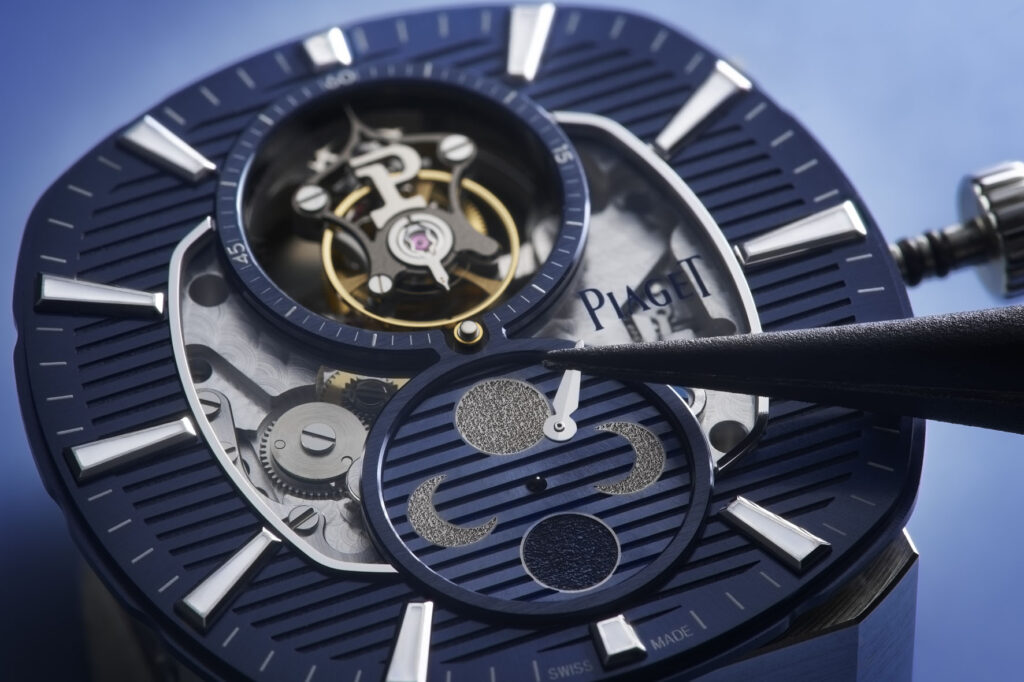
The hand-wound 642P calibre is found in the Gouverneur Tourbillon Moonphase and is developed based on the 600P calibre. Rectangular in shape, it presents the same characteristic as many Piaget calibres: extreme thinness. In fact, it is only 4 mm thick and has a moonphase module at 6 o’clock and, mirrored at 12 o’clock, a titanium flying tourbillon cage with Piaget’s emblematic P. It works at 21,600 vibrations per hour, with a power reserve of around 40 hours. The calibre functions are reduced to the essentials: hours and minutes, small seconds on the edge of the tourbillon window, moon phases and no date display.
This essentiality is not reflected in the 642P’s highly polished finish. The bridges and mainplate have a circular-grained finish and are hand-finished, the screws are blued and there is also an elegant circular Côtes-de-Genève finish. The overall thinness of the calibre is due to the reduced thickness of the 600P (3.5 mm) to which Piaget added the moonphase module, which is only 0.5 mm thick. No small technical challenge, in the name of the ultra-thin emblem of the Maison.
THE PIAGET POLO FLYING TOURBILLON MOONPHASE CASE AND DIAL
In the Piaget Polo Flying Tourbillon Moonphase, the shape and size of the movement affect the dimensions of the titanium case. Its diameter is generous, 44 mm, while its thickness manages to remain under 10 mm, despite the presence of the tourbillon and moonphase module. We are in fact at 9.8 mm, a remarkable result.
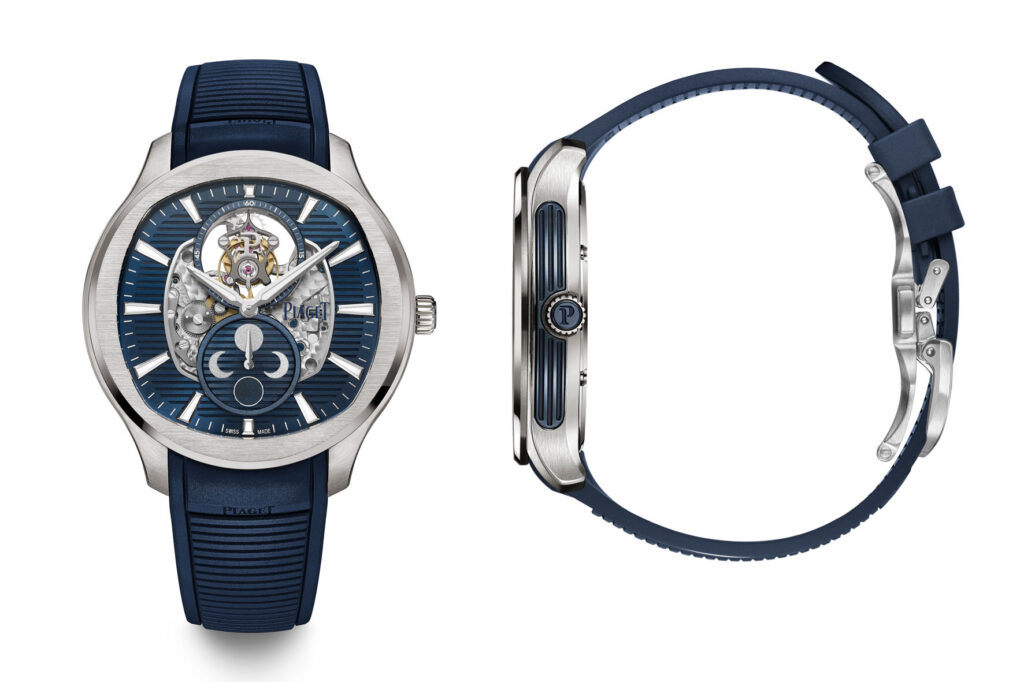
The Polo’s case itself is built to interact with the dial in every way. Indeed, there is a constant and subtle play of cross-references between the two elements of the watch. Meanwhile, the dial has the classic coussin shape integrated in the round shape of the case, in a subtle work of balance and proportion. Again, the so-called gadroon work that characterises the blue dial is found on the sides of the case middle in two inserts of the same colour and finish, which also distinguish the winding crown with the engraved P of Piaget.
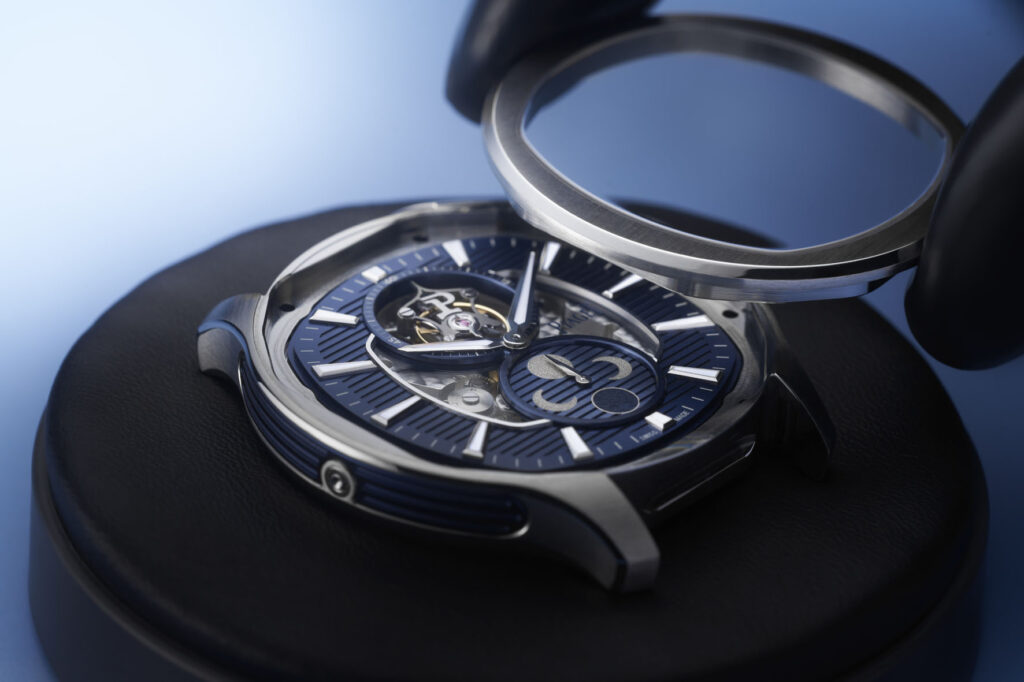
The dial is complex but harmonious. A large central aperture, partially covered by the tourbillon cage and moon phase indicator and protected by a sapphire crystal, allows part of the 642P calibre to be seen. It is defined by a thin metal frame, barely touched by the elongated hour markers, for maximum legibility. It is also favoured by the cover of luminescent material, present on the dagger hands as well.
PRECISION MOON PHASES
The presence of the gadroon motif inside the moon phase indicator is beautiful. Its texture is slightly offset from that of the dial, so as to give more movement to the whole, while the colour is the same. Speaking of moon phases, for their indication, the Piaget Polo Flying Tourbillon Moonphase features a solution similar to that of the Gouverneur Tourbillon Moonphase – i.e. by means of a hand. Full Moon, first quarter, new Moon, and third quarter are displayed on the counter, with the intermediate phases identified by the hand. A display that is simple only in appearance, because the moon cycle is indicated with so-called astronomical precision.
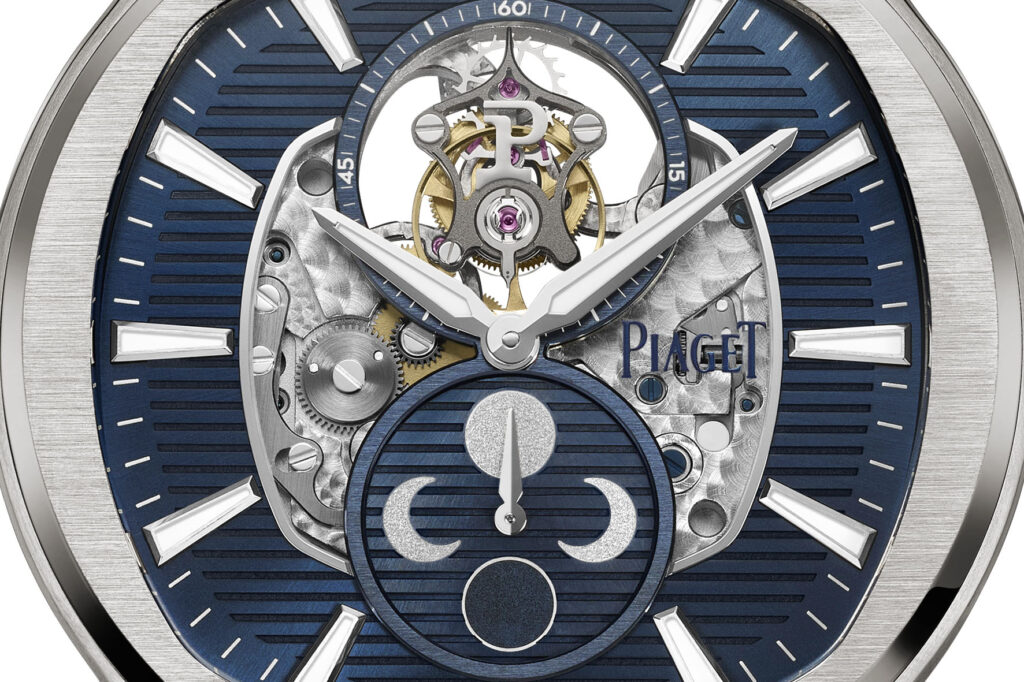
The synodic month, or lunar month, is in fact the time it takes for the Moon to realign its position with the Sun and the Earth after making an entire revolution around our planet. In essence, it is the time between one new moon and the next. The duration of a synodic month is variable due to the irregular motion of the Moon; it is shortest at the summer solstice and longest at the winter solstice, with a difference of about 7 hours above or below the average duration.
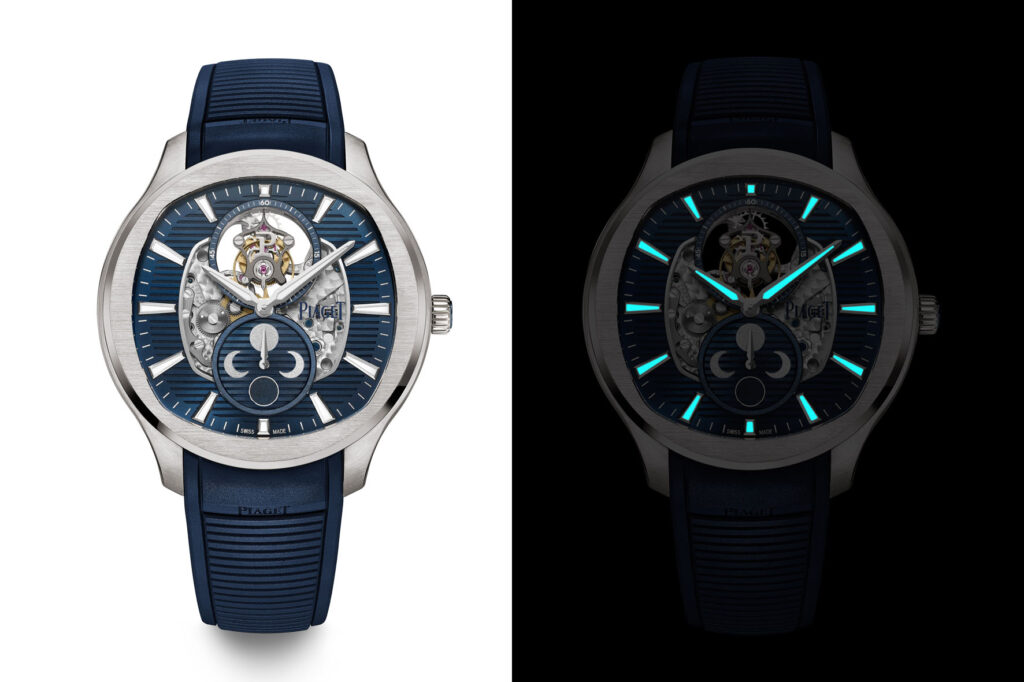
Since the relative velocities of the Earth and Moon generate slightly uneven cycles, most moon phase mechanisms reproducing these phase shifts are not 100% accurate. Thanks to Piaget’s technical expertise, it takes 122 years for these phase shifts to translate into the one-day difference between the 642P calibre display and the observable sky. On the Piaget Polo Flying Tourbillon Moonphase, this variation can be corrected by adjusting the Moon display via the corrector at 9 o’clock.
SPORTY YET REFINED
The uniqueness of the Piaget Polo Flying Tourbillon Moonphase is thus expressed on several levels. From the titanium case, which makes it light and wearable, to the shape of the case itself, ergonomic and elegant; from the double blue strap, in rubber or alligator, to the precision moon phase module; from the gadroon dial to the manufacture tourbillon, which visually lightens the perception of the watch. Which is available at a retail price of 115,000 euros.
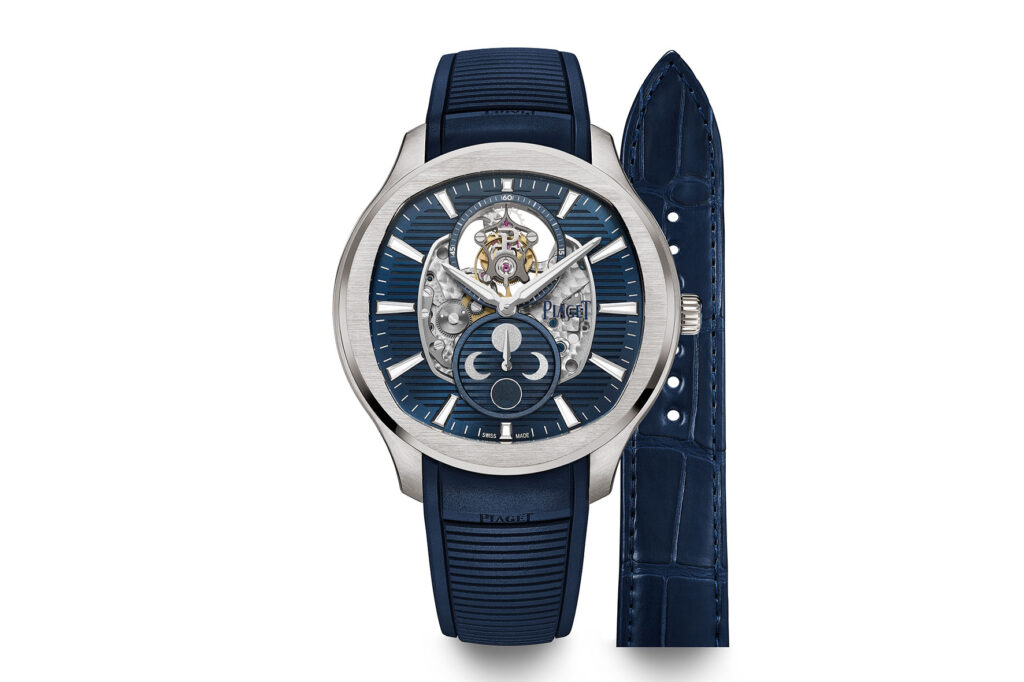
The fact that it houses two of the most elegant complications in haute horlogerie does not distance it from the philosophy that led to the creation of the collection almost fifty years ago. ‘Our customers want to be refined and wear a beautiful watch even while exercising’, said Yves Piaget at the time of the timepiece’s launch. The Polo Flying Tourbillon Moonphase is exactly that, once again.
By Davide Passoni

